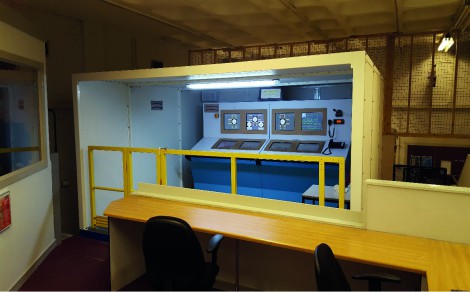Safety through simulation

Simulators are a vital tool in modern industry. We see them used in aviation to aid pilots in learning the cockpit controls and controlling airplanes; in medicine to give clinicians greater exposure to highly complex procedures; and even in sports like motor racing to allow drivers to learn every corner of the track. While simulators allow users to hone their particular skillsets, John Curno, regional sales manager at Bosch Rexroth, shows how simulators are being used in the offshore industry to improve safety among the workforce.
In the oil and gas industry, employees working on offshore rigs are faced with harsh conditions as a result of their physical location and, subsequently, ensuring the safety of employees is a primary concern. But the nature of the industry means providing adequate training for every situation is highly challenging. While routine operations can be imitated to support employees in becoming familiar with equipment on board rigs, emergency scenarios – which may arise as a result of stormy seas or even a vessel crashing into the rig – cannot be easily replicated. To practice such a scenario in real life, rigs would need to undergo an actual emergency situation, creating huge expense and ultimately putting lives at risk unnecessarily.
A specialist company called Pisys designed a bespoke solution for control room simulation and delivered a purpose-built Operations Training Simulator and Motion Platform for the International Oil & Gas Training Centre, based in Aberdeen. This simulator will support the training of offshore industry personnel – particularly through ballast control and stability courses. The fully equipped Operations Training Simulator and Motion Platform is loaded with Bosch Rexroth technology and is attracting students from across the world.
Bringing emergency situations to life
Providing a fully immersive experience which mimics an infinite number of scenarios for up to six people, the simulator is built around a bespoke motion platform capable of two-axis motion to simulate offshore energy industry vessels in various scenarios up to +/-12degs. Utilising Bosch Rexroth components, including two EMC HD Electromechanical Cylinders alongside drives, firmware and cables, ballast control scenarios can be accurately simulated – including emergency situations such as loss of stability or vessel collision – on board jack-ups, semi-submersibles and FPSOs.
Perfectly replicating an offshore control room, the Operations Training Simulator comes complete with communications equipment and control panels, and can be dismantled and re-assembled at a different location, should the equipment ever need to move premises.
Peter Henderson, director of Pisys, said: “Due to the nature of the offshore energy industry, exposing personnel to real-life situations for the purposes of training is almost impossible. After all, these vessels are finely tuned spaces at the centre of productivity, and doing so would put people, plant and environment at risk.
“Instead, using a simulator means we can expose personnel to a variety of situations they wouldn’t otherwise experience until faced with a real-life catastrophe. Using specialist equipment from partners such as Bosch Rexroth means we can ensure each scenario is simulated as accurately as possible, as well as leaning on their experience to make the simulator as immersive as possible, while remaining safe and reliable.”
The use of Bosch Rexroth’s equipment on the moving platform means that the equipment can be relied upon for years to come – something which was vital given the Training Centre’s previous training equipment, which was also provided by Pisys, and used for 30 years. Take the EMC HD for instance: this robust electromechanical cylinder has been developed for efficient use even under harsh conditions, providing precise positioning, high dynamics and powerful drive within a rugged design, making it a perfect match for this application. The use of our other equipment, such as drives and firmware, also meant we could design the most suitable motion system for the training equipment which will put students through their paces in a variety of emergency situations.
Playing a key part in the design and build of the simulator also meant our specialist team could recommend and install the most effective equipment – not just in making the rig do all that’s required of it, but also to make it flexible enough to move to new locations when required. While the rig currently sits at the Training Centre in Aberdeen, it will be moved to a new location in around two years, making it accessible to even more students so safety can remain at the forefront of the oil & gas industry moving forwards.
-
SMART Manufacturing & Engineering Week
04 - 05 June, 2025
NEC, Birmingham UK -
PPMA 2025
23 September, 2025, 9:30 - 25 September, 2025, 16:00
NEC, Birmingham UK -
Advanced Engineering Show 2025
29 October, 2025, 9:00 - 30 October, 2025, 16:00
NEC, Birmingham UK










